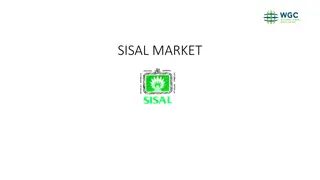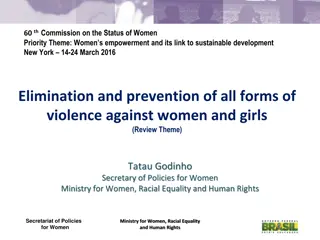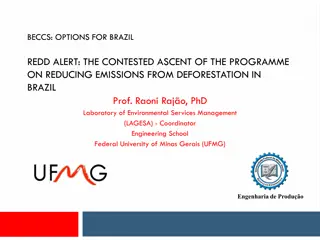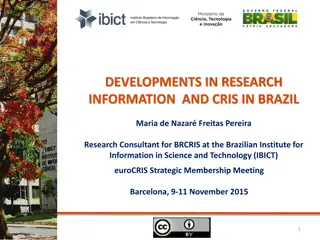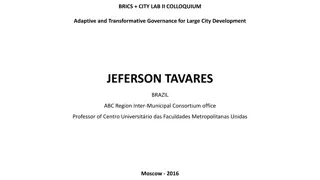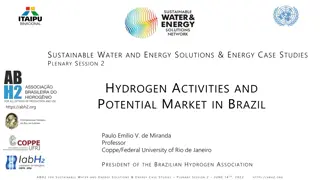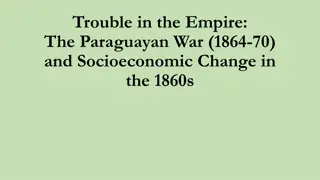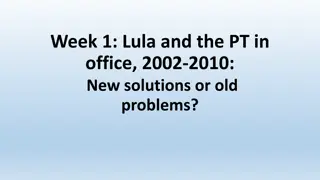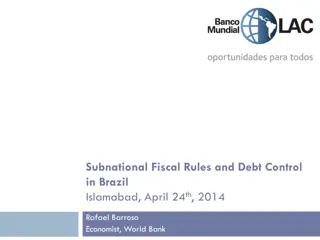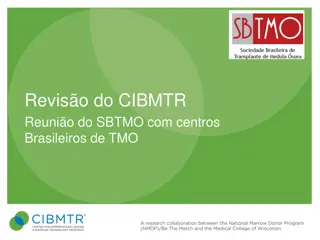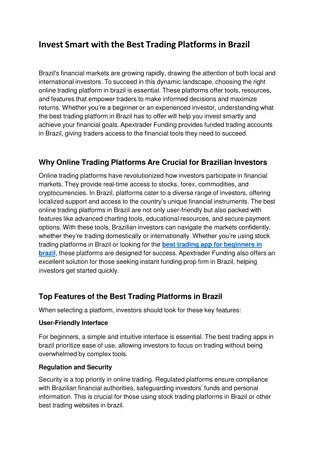
Importance of Research in Ministry
Discover the significance of research in ministry work through credibility, wise decision-making, and strategic implementation for effective church outreach and mobilization. Embrace the biblical model of integrity and knowledge to cooperate with the Holy Spirit in reaching God's harvest through informed strategies.
Uploaded on | 0 Views
Download Presentation

Please find below an Image/Link to download the presentation.
The content on the website is provided AS IS for your information and personal use only. It may not be sold, licensed, or shared on other websites without obtaining consent from the author. If you encounter any issues during the download, it is possible that the publisher has removed the file from their server.
You are allowed to download the files provided on this website for personal or commercial use, subject to the condition that they are used lawfully. All files are the property of their respective owners.
The content on the website is provided AS IS for your information and personal use only. It may not be sold, licensed, or shared on other websites without obtaining consent from the author.
E N D
Presentation Transcript
Sepal Research Larry & Stephanie Kraft Research Department Sepal Brazil May 2003 I, wisdom, dwell together with prudence; I possess knowledge and discretion. - Proverbs 8:12
The most important thing is to keep the most important thing in the place of most importance. - ancient German proverb We believe that in order to maintain the focus of our ministry on what is most important (in our work toward completing the Great Commission) we need: GOOD INFORMATION: GOOD INFORMATION: RESEARCH RESEARCH
Why we emphasize research: It gives us credibility in the eyes of the church It helps us make wise decisions It encourages the wise use of our resources It aids us in the implementation of well-informed and focused strategies It provides information necessary for the motivation, training and mobilization of the church to reach the entire country
A Bblical Model: A B blical Model: Then I said to them, You see the trouble we are in: Jerusalem lies in ruins, and its gates have been burned with fire. Come, let us rebuild the wall of Jerusalem, and we will no longer be in disgrace. I also told them about the gracious hand of my God upon me and what the king had said to me. They replied, Let us start rebuilding. So they began this good work. Nehemiah 2:17-18
Integrity without knowledge is weak and useless, and knowledge without integrity is dangerous and a cause for concern -Samuel Johnson (1709-1784) Information can be used by the enemy when it is: Incomplete Incorrect Poorly interpreted Example: Exaggerations are used by the enemy to take away the church s motivation for the evangelistic task. We can use data to say anything we want. The key question is, What does God want to say to His church through the information at hand?
The Purpose of Research in Sepal: Perceive what the Holy Spirit is doing and where He is leading the Church, so that we can cooperate with Him and be better used by God in His harvest.
Top Priority: Assist the Sepal Team Understand the church and its context Discover ministry areas in which the Brazilian Church most needs assistance in order to be able to grow and multiply and reach the entire country Seek to discern the right time for the right ministry Discover effective ministry methods and models Provide information for the evaluation of ministry objectives and for decision making regarding the opening and closing of fields and areas of ministry
Researching the needs of church Leaders: Surveys at pastors conferences Group consultation with pastors Interviews with pastors and church leaders Surveys in magazines and leadership journals
Researching the Evangelical Leadership Subjects of most interest in the purchase of books ministry tools theology family counseling Bible commentaries missions devotionals biographies others Survey of readers of Leadership Jornal 2001
Factors which affect the decision to participate in training events theme speaker price location date timeframe sponsoring organization
Most sought-after themes or subjects family discipleship church growth/planting counseling missions theological questions inner healing Bible studies spiritual warfare evangelism sermons small groups youth work prayer ministry controversial subjects others
Contextual Research This type of research focuses on factors which affect the reaching of the country Religious Ethno-linguistic Sociological Political Economic Geographic/Demographic Historical Cultural
The Northeast of Brazil sociological/religious comparison 100 percentage of population 80 60 40 20 0 illiteracy income < 1 min. wage running water garbage collection electricity Protestants Brazil w/o the Northeast The Northeast Sources: Veja Magazine 3/27/96, pp. 36-37 & Sepal Research Department 1998
External Research: Evaluate the potential of the church to disciple the nation Highlight needs Expand the leaders vision Seek out change agents Identify effective ministry models Attempt to discern God s timing for mobilizing the church
BRAZIL North Region aprox. 40.000 communities with churches (4830 ) w/o churches (36157 ) Source: Brasil 2010 Research in North Region & IBGE Analysis & Graph: Sepal / Brasil 2010 07/99 <larrystephkraft@xc.org> NO-502
BRAZIL BRAZIL Microregions Microregions % of Evangelicals less than 2 2 to 5 5 to 10 10 to 20 20 to 30 more than 30 Percentage of evangelicals in each microregion according to the 1991 census Source: IBGE 1991 census Graphic analysis - SEPAL -1999 <larrystephkraft@xc.org>
Researching the Church: Where are the churches? How many churches are there? Who is being reached? How is the church growing? Where is the church growing or not and why? What is the future potential for church growth? What is the receptivity of the different ethnic groups and geographic regions? How is the church progressing as a as a missionary sending force?
Church XYZ (annual growth rate in members) Church Church Growth Growth Consultations Consultations 40% 30% percentage 20% 10% Church XYZ (membership projections) 3000 0% 1983 1984 1985 1986 year 1987 1988 1989 2500 members past 2000 AAGR 30% AAGR 20% 1500 AAGR 10% 1000 500 1985198619871988198919901991199219931994 year
Teaching and evaluation on: Teaching and evaluation on: Church growth principles The health of local churches The local church in missions Our focus has moved away from these areas in recent years due to other groups beginning to minister in these areas.
Church Multiplication: The Churches of Ipiranga A survey of all of the streets of the neighborhood during 1998 and 1999 located 75 Protestant churches of all denominations. The population to church ratio was one church for every 2,533 people. ^ ^ ^ ^ ^ ^ ^ ^ ^ ^ ^ ^ ^ ^ ^ ^ ^ ^ ^ ^ ^ ^ ^ ^ ^ ^ ^ ^ ^ ^ ^ ^ ^ ^ ^ ^ ^ ^ ^ ^ ^ ^ ^ ^ ^ ^ ^ ^ ^ ^ ^ ^ ^ ^ ^ ^ ^ ^ ^ ^ ^ ^ ^ ^ ^ ^ ^ ^ ^ ^ ^ ^ ^ Sepal - Depto. de Pesquisas February 2000 (11)5523-2544 ^ ^ ^ ^ ^
Project Mar lia 2002
PROJECT MARLIA 2002 Summary of Research Results Population of Mar lia: 187.804 Number of Protestant churches: 134 Average attendance: 106 people per church Percentage of the population in church on Sunday: 7,5% Population to church ratio: 1402 (one geographic region had 5253 inhabitants per church) Churches with 100 or less in attendance: 71% Churches with more than 250 in attendance: 7%
Religious Institutions of Marlia (percentage of total meeting places) Catholic Churches(19%) Spiritist centers or esoteric religions (11%) Others (15%) Protestant Churches (55%) Projeto Mar lia 2002 -- Sepal / Projeto Brasil2010 / Igreja Evang lica das Na es - mar o de 2002 - info@brasil2010.org / ien@terra.com.br
As Igrejas de Mar lia Projeto Mar lia 2002 Projeto Mar lia 2002 -- Sepal / Projeto Brasil2010 / Igreja Evang lica das Na es - mar o de 2002 - info@brasil2010.org / ien@terra.com.br
Marlia 2002 Population per church in each geographic region 12000 10000 Inhabitants per local church 8000 No Churches 6000 5253 4000 2271 1776 1639 2000 1360 1159 869 714 0 Centro Leste 1 Leste 2 Norte 1 Norte 2 Oeste 1 Oeste 2 Sul 1 Sul 2 geographic region Projeto Mar lia 2002 -- Sepal / Projeto Brasil2010 / Igreja Evang lica das Na es - mar o de 2002 - info@brasil2010.org / ien@terra.com.br
Marlia - SP Norte 1 Norte 2 Leste 1 N . de Habitantes por Igreja Local Oeste 1 Leste 2 Centro 0 - 750 751 - 1000 1001 - 2000 2001 - 6000 Sem Igreja Sul 2 Sul 1 Oeste 2 l Projeto Mar lia 2002 -- Sepal / Projeto Brasil2010 - mar o de 2002 - (11) 5523-2544 - info@brasil2010.org Projeto Mar lia 2002 -- Sepal / Projeto Brasil2010 / Igreja Evang lica das Na es - mar o de 2002 - info@brasil2010.org / ien@terra.com.br
Marlia 2002 percentage of the population attending church 35,0% 28,8% 30,0% 25,0% 20,0% 15,0% 10,0% 7,1% 6,9% 5,2% 4,6% 4,6% 4,2% 5,0% 1,3% 0,0% 0,0% Centro Leste 1 Leste 2 Norte 1 Norte 2 Oeste 1 Oeste 2 Sul 1 Sul 2 Obs.: porcentagem da popula o residente em cada regi o geogr fica da cidade presente nas igrejasevang licas no culto principal da semana geographic region Projeto Mar lia 2002 -- Sepal / Projeto Brasil2010 / Igreja Evang lica das Na es - mar o de 2002 - info@brasil2010.org / ien@terra.com.br
Marlia - SP Norte_1 Norte_2 Porcentagem dos habitantes presentes nas igrejas Leste_1 Oeste_1 O es t e_ 1 N or t e_ 2 C en t r o N or t e_ 1 L es t e_ 2 L es t e_ 1 S ul O et _ 2 l _ 2 Leste_2 Centro Sem Igreja menos que 3 3 - 5 5 - 10 mais que 10 O es t e _ 1 N or t e _ 2 C en t r o N or t e _ 1 L es t e _ 2 L es t e _ 1 l _ 1 S ul s t e l t t l l Sul_2 Oeste_2 Sul_1 O e s t e _ 1 C e n t r oL es t e _ 2 S ul _ 2 Projeto Mar lia 2002 -- Sepal / Projeto Brasil2010 / Igreja Evang lica das Na es - mar o de 2002 - info@brasil2010.org / ien@terra.com.br
PROTESTANTS IN BRAZIL 55,000,000 50,000,000 45,000,000 Total Protestants 40,000,000 35,000,000 30,000,000 25,000,000 20,000,000 15,000,000 10,000,000 5,000,000 1980 1984 1988 1992 1996 2000 2004 2008 1982 1986 1990 1994 1998 2002 2006 2010 1980-1991 1992-2000 2001-2010 (projection) Seaor Amostra de Domicilios - 1988 e Censo de 1980 Sepal Depto. de Pesquisas - 1993 Source: IBGE--2000, 1991 and 1908 Census Sepal 2003 - <pesquisas@sepal.org.br>
BRAZIL 2002 Percent Protestant in each state Protestants / State less than 10 % 10 to 15 % 15 to 20 % more than 20 % Sourece: IBGE--2000 & 1991 Census figures year 2002 - projection Sepal 2003 - (11)5523-2544 <pesquisas@sepal.org.br>
Brazil Percent Protestant by Geographical Region 1980 -- 2002 25 % of the population identifying 20 themselves as Protestant 15 10 5 0 1980 1991 South 2002 Centralwest North Southeast Northeast Brazil total Sepal Research 2002 <pesquisas@sepal.org.br> Source: IBGE Demographic Census
Brazil Protestant Growth Rate by Region 1980 -- 2000 9 8 7 growth rate (%) average annual 6 5 4 3 2 1 0 Pop. 1980-91 Prot. 1980-1991 Pop. 1991-2000 Prot. 1991-2000 Centralwest North Southeast South Northeast Brazil total Sepal Research 2002 <pesquisas@sepal.org.br> Source: IBGE Demographic Census
www.acmi.org.br www.infobrasil.org www.sepal.org.br www.brasil2010.org
It is not good to have zeal without knowledge, nor to be hasty and miss the way. -Proverbs 19:2

![Halal_Chicken_from_Brazil-_Ensuring_Quality_and_Authenticity[1]](/thumb/86918/halal-chicken-from-brazil-ensuring-quality-and-authenticity-1.jpg)
